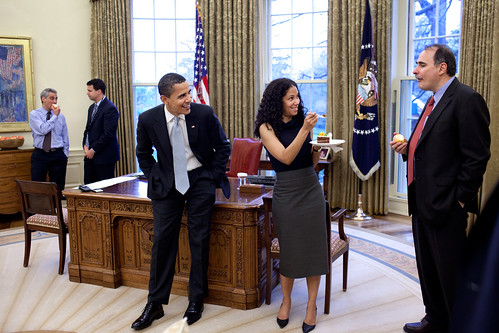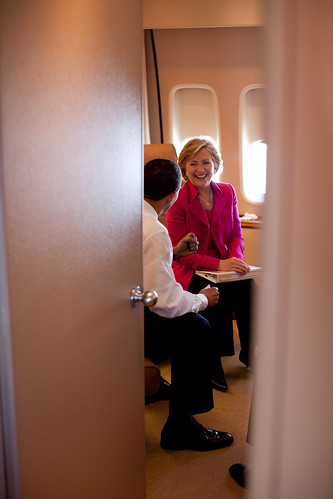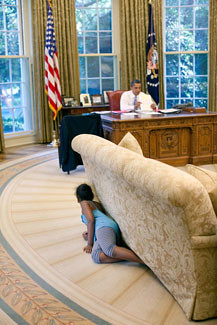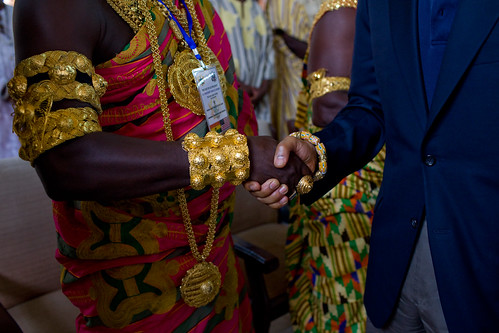At this point I find myself seeking out and viewing photo exhibits in terms of “what can I learn from this work to help improve my photography? What makes these images successful?” So instead of just contemplating these things in my head and torturing whichever friend happens to find themself across from me in a bar, I’ll start to put my thoughts down here. I think I’ll mainly focus on “lessons learned” – what I’ve picked up from looking at and thinking about the images.
I happened by the Leica Gallery last week, and had the chance to see its Pete Souza – Obama exhibit. The success of the images on display are a result of a few strong and consistent choices and techniques Souza applies in his photography, including his awareness of the moment, his framing and point of view, use of natural light when available, and his awareness of precedent.
All photos shown in today’s post are by Pete Souza.
Souza is the “Chief Official White House Photographer,” so he obviously has unparalleled access to President Obama’s daily activities. His ability to capture special moments was obvious from the start or the term, with his two elevator shots from the night of the Inaugural Ball: an intimate moment with the First Lady, and the final image of the night with the President heading to bed.
This first one of these, which can also be see on Souza’s home page as well as on the White House Flickr site, demonstrates two of his strengths: his ability to capture both the moment, and the intimacy of the environment it occurred in. The subject of a majority of the photos in the exhibit is a specific moment, but one that typically speaks to a wider subject or theme. This photo was just one brief encounter between the President and the First Lady, yet it clearly represents their relationship and personalities. The same is true for the other photos in the exhibit. While Souza has undoubtedly captured hundreds or thousands of singular moments between Obama and his staff, the ones he displays all demonstrate more than what was occurring that split second. They show the relationships, the personalities, the mood. They do this through the facial expressions, the body language, the framing of the space around them.
The second characteristic of many of these photos is that they capture the intimacy of the moment and of the spaces they occurred in. Souza often accomplishes this through use of a wide angle lens and by expanding the frame beyond the subject to the space around it to show that the interaction is taking place on a plane, or in a corridor. He also does this through creative framing, looking in through a doorway or window, or using a lower point of view.
Another tool he uses is making references to previous photos or works of art. By possessing knowledge of the work that has come before him, he has an eye for similar situations and compositions. There seems to be a few particular references to Kennedy era images. For example, this one of Sasha sneaking up on Obama brings to mind the photos of JFK Jr. playing under the his father’s desk – the father hard at work with the playful child on the floor (there are also a couple photos in the exhibit with Caroline Kennedy and Obama discussing that photo and looking at the desk for the hidden door).
And one can’t help but to recognize the tongue-in-cheek reference to DaVinci’s Last Supper here:
Other images make use of light and of details to tell the story of the situation. While Souza is probably often using flash to light his indoor subjects, he has a keen eye for natural light when the situation presents itself. There are a few shots of Obama at his desk, or a detail of his hand, that use dramatic natural light to set the mood. He also focuses in on very specific details as the subject of some of the photos, often times hands. For example, Obama’s hand on a phone, Michelle’s hands clasped behind her back, or a Ghanean’s hand, gold jewelry, and tribal outfit.
Finally, Souza sometimes turns the camera around, to capture the expressions and reactions of those viewing the President. Several times I have run across the tip to turn around 180 degrees and see if there is another image behind you that is worth capturing, and Souza clearly demonstrates it is worth looking:
Here’s a brief interview with the photographer:
So, I believe these are some of the elements that make these images successful. And what makes them powerful, important, and lasting is that in addition to capturing a instant in time, an expression or detail, or an interaction, they also speak to a greater moment, personality, or relationship. That’s about enough for this lesson. Look forward to retroactive reviews of Robert Frank’s The Americans, Phil Borges’ Tibetan Portrait, Vermeer’s The Milkmaid, and Cornell Capa’s Concerned Photographer. Vermeer? “What?”, you wonder? Well, stay tuned and see…








